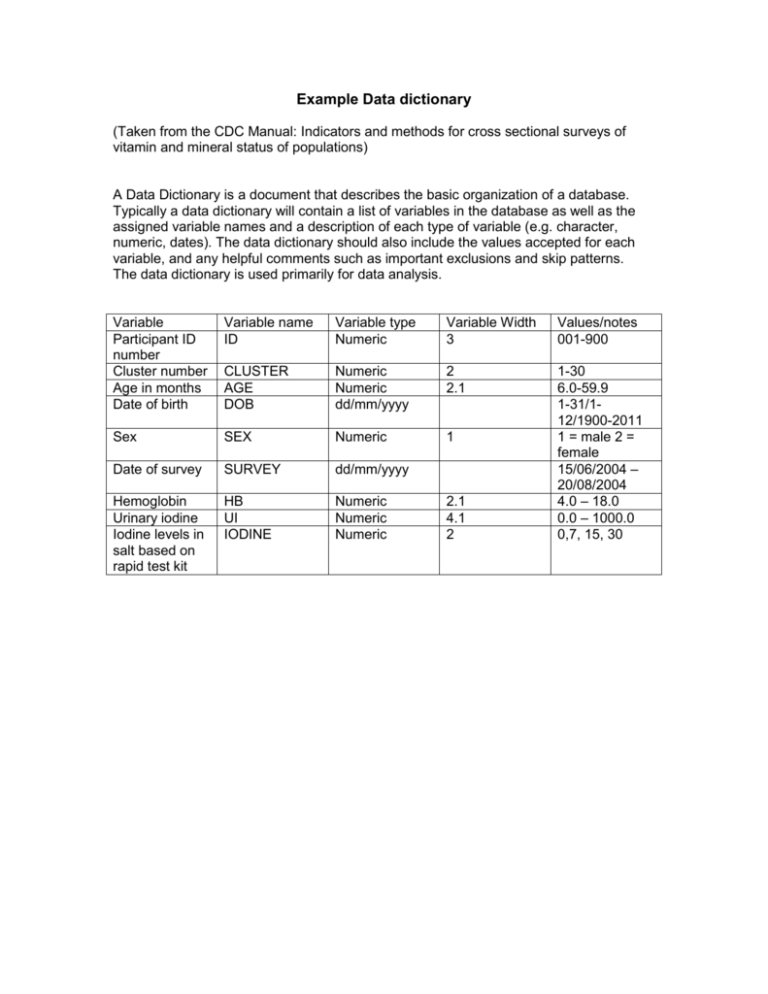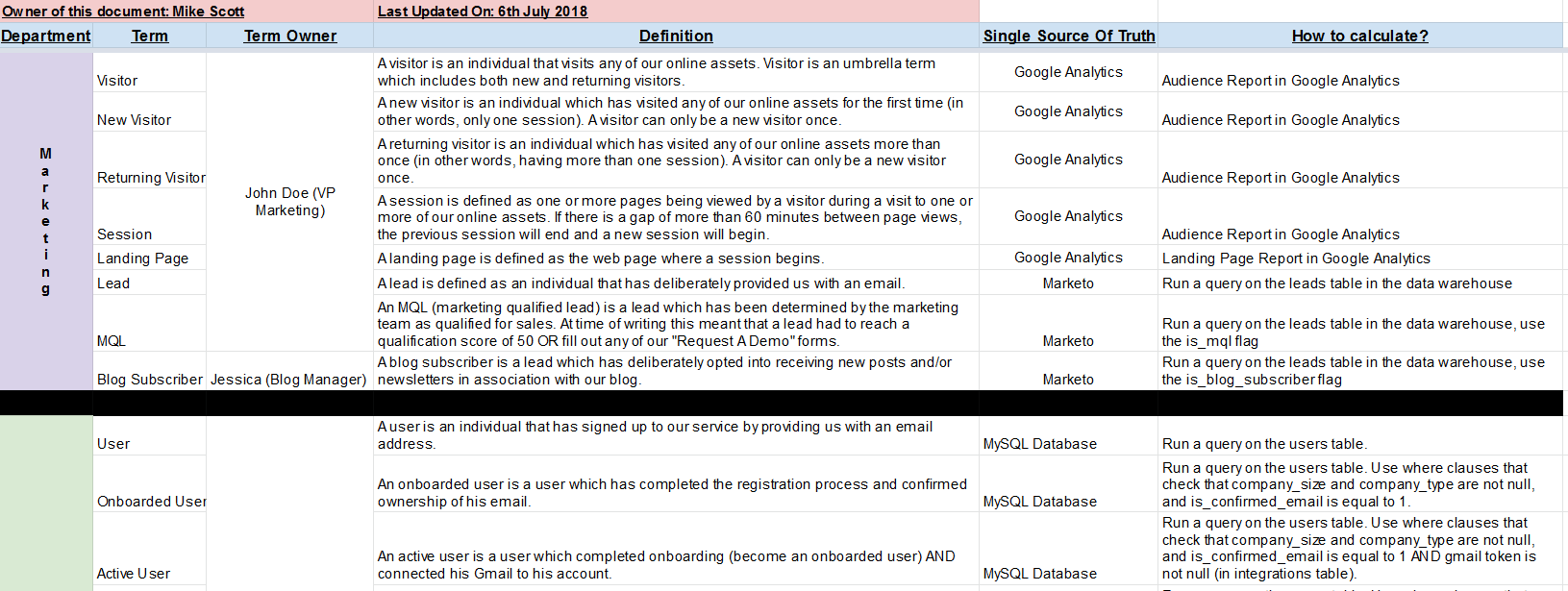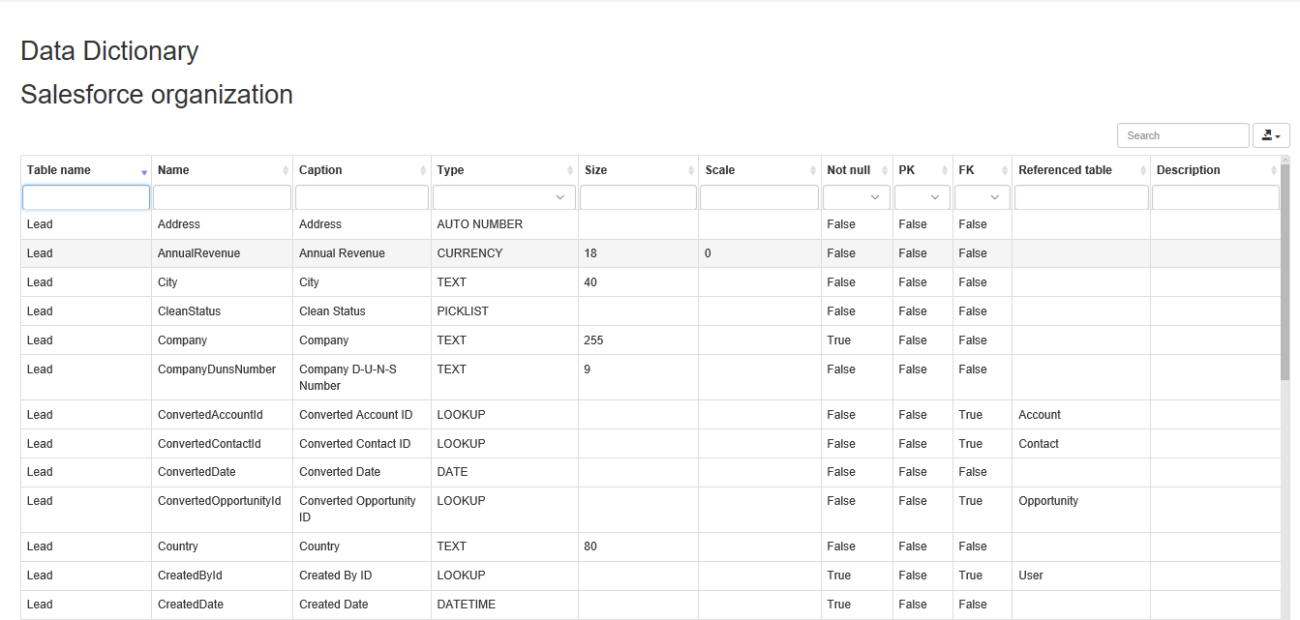Data Dictionary Template
Data Dictionary Template - Web what is a data dictionary? It functions as a reference point to understand where a given data set came from, what it describes, how it got there, as well as what potential pitfalls might be ascribed to that data set. We also have a data dictionary template in our data dictionary template. Web a data dictionary is an organized list of the structure and attributes of the data stored in a database. Web a data dictionary is a documentation tool that provides metadata, metrics, or details about a database and the data within it. Web a data dictionary is a document that assists you in navigating your team's mountain of data. Web helpful tools and software before you go about making a data dictionary for each specific dataset, you have a few things to think about: Web data stewards may also utilize the cms data dictionary template2 and guide for manually creating a simple data dictionary in excel. Web a data dictionary is a collection of metadata such as object name, data type, size, classification, and relationships with other data assets. • start building a data dictionary during the gathering business requirements phase. Web to learn how to create a data dictionary in excel, a data dictionary demonstration file with coding examples can be downloaded from the data dictionary tab of any redcap project. Web a data dictionary is a document that assists you in navigating your team's mountain of data. That is, the bi team should create a spreadsheet with a list. [downloadable example template] new from the projectbi team: Web a data dictionary is a source of truth. You click the validate urls button and the google sheet returns which parameters passed inspection and which ones failed. That is, the bi team should create a spreadsheet with a list of the names of the business concepts and metrics (measures) and how.. Compare 5 data dictionary tools and choose the best one for your business! Web a data dictionary is a list of key terms and metrics with definitions; Collect terms the first step is to compile a list of terms. Web what is a data dictionary? Web helpful tools and software before you go about making a data dictionary for each. You click the validate urls button and the google sheet returns which parameters passed inspection and which ones failed. Documenting data is critical to maintaining, sharing, and using it, and therefore this is a tool that can save time, improve code quality, and improve communication. Web what is a data dictionary? Web a data dictionary is an inventory of data. Understand their definition, critical role in data management, and diverse applications. That is, the bi team should create a spreadsheet with a list of the names of the business concepts and metrics (measures) and how. Web a data dictionary is a document that assists you in navigating your team's mountain of data. We also have a data dictionary template in. Discover your organization assets in the catalog marketplace and request access. Web helpful tools and software before you go about making a data dictionary for each specific dataset, you have a few things to think about: Documenting data is critical to maintaining, sharing, and using it, and therefore this is a tool that can save time, improve code quality, and. While you can use one of several tools to create a data dictionary, in this article, we'll discuss the best practices for developing one to ensure your project is successful. You click the validate urls button and the google sheet returns which parameters passed inspection and which ones failed. Web a data dictionary is a source of truth. Although this. Consider a similar naming convention for files and folders Documenting data is critical to maintaining, sharing, and using it, and therefore this is a tool that can save time, improve code quality, and improve communication. Data dictionary excel spreadsheet columns Web examples, templates and definition | decube. Desirable characteristics of a good data dictionary include timeliness, consistency, accuracy and completeness Web guideline includes a quick reference guide and excel template. Web a data dictionary is a source of truth. Web helpful tools and software before you go about making a data dictionary for each specific dataset, you have a few things to think about: Desirable characteristics of a good data dictionary include timeliness, consistency, accuracy and completeness Data dictionaries provides. Web a data dictionary is an inventory of data elements in a database or data model with detailed description of its format, relationships, meaning, source and usage. The data dictionary provides additional information about the data elements and their relationships within the database, which helps with understanding and managing it. While you can use one of several tools to create. Url validation you provide a set of urls, tracking parameters and their expected values. [downloadable example template] new from the projectbi team: • the data dictionary is a living document that must be regularly maintained. Web to learn how to create a data dictionary in excel, a data dictionary demonstration file with coding examples can be downloaded from the data dictionary tab of any redcap project. Discover your organization assets in the catalog marketplace and request access. Understand their definition, critical role in data management, and diverse applications. While you can use one of several tools to create a data dictionary, in this article, we'll discuss the best practices for developing one to ensure your project is successful. Most dbmss also have the ability to annotate data dictionary elements (called comments, descriptions or extended properties). Data dictionaries provides valuable definitions for the data and help users understand any dataset before diving into it. You click the validate urls button and the google sheet returns which parameters passed inspection and which ones failed. A simple & thorough overview / understand data analysis / by noah it may sound strange to have a dictionary for data since a dictionary is data, but these metadata repositories are an essential element to maintaining and communicating the structure of any underlying. Web a data dictionary is a centralized repository of metadata that provides definitions, usage, and context for data elements. Web a data dictionary is an inventory of data elements in a database or data model with detailed description of its format, relationships, meaning, source and usage. Web many companies wait a long time before defining their data dictionary, which can make the process much more difficult in the future. It functions as a reference point to understand where a given data set came from, what it describes, how it got there, as well as what potential pitfalls might be ascribed to that data set. Although this seems like a simple exercise, it’s very difficult to align business departments with the same definitions.
How to Create a Data Dictionary? + Templates From ProjectBI & USDA by 🅺🅾🆁🅺🆁🅸🅳 (🅺🆈🅻🅴) Medium

Analytics Data Dictionary Download Free Template QA2L

How to Create a Data Dictionary? + Templates From ProjectBI & USDA by 🅺🅾🆁🅺🆁🅸🅳 (🅺🆈🅻🅴) Medium

Data Dictionary Templates

Data Dictionary Sample Reports & Dashboards insightsoftware

Data Dictionary Template and Example Data Dictionary Template Ref. Data Element Format/Type

How to Create a Data Dictionary? + Templates From ProjectBI & USDA by Korkrid Akepanidtaworn

Business Data Dictionary Template

4 Steps to Create a Salesforce Data Dictionary Softbuilder

Business Data Dictionary Template
It Helps Ensure That Data Is Consistently Understood And Used Across The Organization, Promoting.
It Describes The Structure Of Your Database’s Tables And Columns, Relations And Constraints.
Web Use This Guide And Free Template On How To Successfully Create A Data Dictionary.
Web Guideline Includes A Quick Reference Guide And Excel Template.
Related Post: